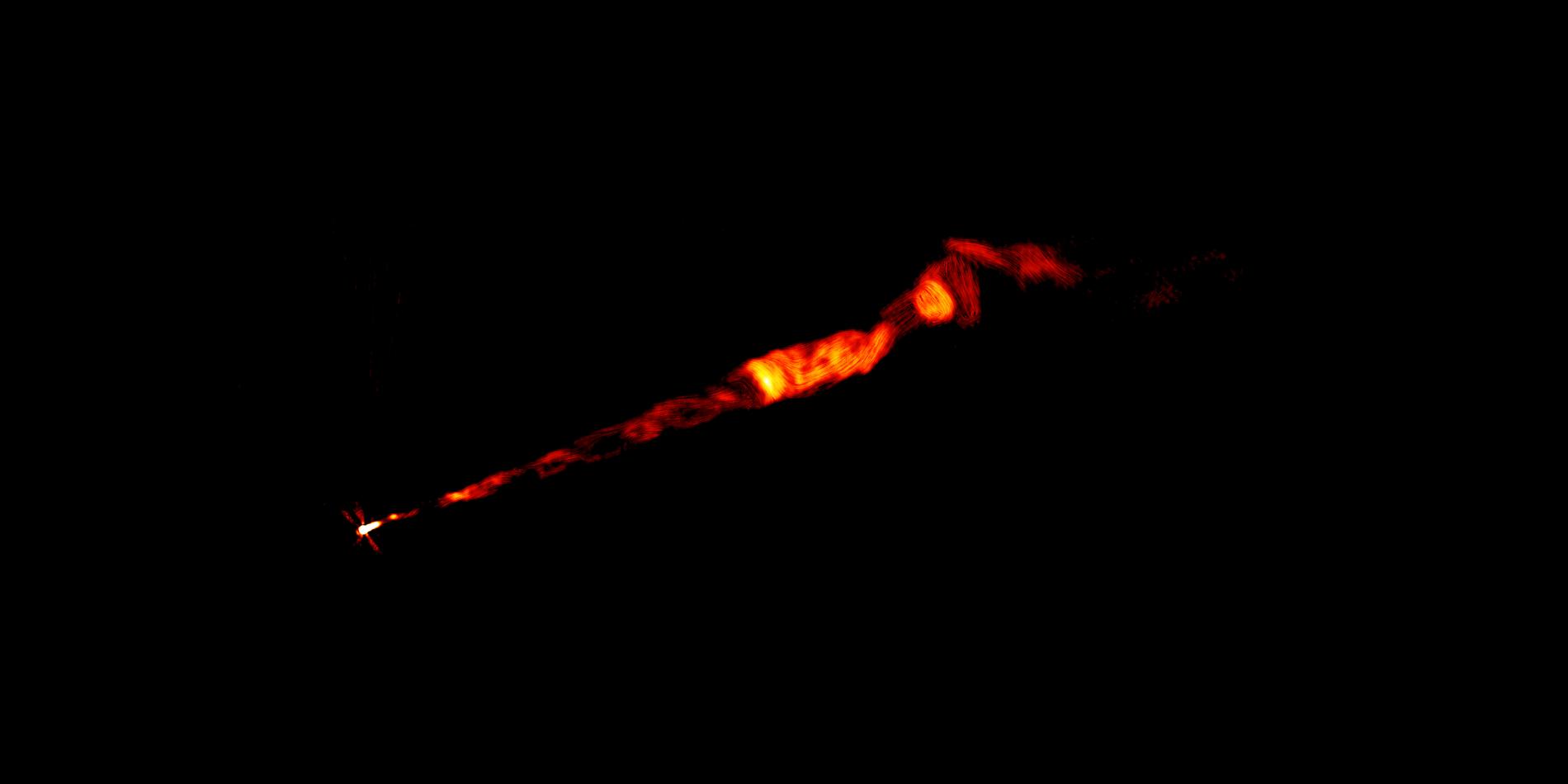Double helix structure observed in the jet emanating from the black hole in M87 galaxy
Produced by the magnetic field, it is the first time that this structure has been observed at such far distances from the black hole. The Institute of Astrophysics of Andalusia (IAA-CSIC) participates in the discovery
The galaxy M87 became famous when, in 2019, the Event Horizon Telescope (EHT) imaged the supermassive black hole at its core. Much more massive than our own Milky Way, a jet of material emerges from the central regions of M87, moving at almost the speed of light and extending far beyond the galaxy itself. Now, an international scientific team has observed how this jet is channelled by the presence of a magnetic field and acquires a double-helix structure. The finding, published in The Astrophysical Journal Letters, was made possible by the Karl G. Jansky Very Large Array (VLA) radio interferometer at the US National Radio Astronomy Observatory.
The images revealed that the magnetic field maintains the helical shape up to a distance of about 3300 light-years from the supermassive black hole. Although this type of magnetic field configuration has been detected in other galaxies, it has never been observed at such distances from the central black hole.
“We obtained very high quality images at several wavelengths of the galaxy M87 using the VLA, and this allowed us to reconstruct the three-dimensional structure of the jet's magnetic field for the first time –says Alice Pasetto, of the National Autonomous University of Mexico, leader of the study–. The material in this jet traces a double helix, a structure very similar to the DNA molecule”.

M87 is an elliptical galaxy located about 55 million light-years from Earth. Its supermassive black hole, about 6.5 billion times the mass of the Sun, is one of the best-known objects of its kind. The EHT not only produced the first image of it, but earlier this year new images showed the magnetic field in the vicinity of the black hole's event horizon.
Pasetto and his collaborators used the VLA to study the details of the large-scale magnetic field by analysing the polarisation of light in radio. This property of the light is directly related to the direction of the magnetic field where it was emitted, and they were able to create a map of the magnetic field along the jet in unprecedented detail. They used the VLA in its most extended configuration to obtain the highest resolution images ever obtained of the jet in this galaxy.
"We expect the magnetic field to adopt a helical configuration very close to the black hole, and we think that this configuration is in fact what allows the material to be channelled out in a very narrow jet. But we did not expect to find that this helical configuration is maintained at such a distance from the centre of the galaxy", says José Luis Gómez, a researcher at the Institute of Astrophysics of Andalusia (IAA-CSIC) who participates in the study.
The magnetic field is expected to weaken with its distance from the black hole. However, the scientists suggested that instabilities in the flow of material within the jet could order the magnetic field lines at the distances seen in the new VLA images. The instabilities produce regions of higher pressure which also compress the magnetic field lines, enhancing the field's strength.
The results suggest that this interaction between instabilities in the jet and the magnetic field is what produces the observed double-helix structure. “If this occurs in M87, it is possible that it also occurs in other similar jets driven by other galaxies –says Carlos Carrasco González, a radio astronomer at UNAM who is participating in the study–. M87 is a galaxy relatively close to us and its jet is very powerful, which makes it an ideal object for a detailed study. Its study helps us to understand the phenomenon of relativistic jets, which is present in many astronomical objects in the Universe, not just active galaxies”.
A. Pasetto et al. Reading M87ʼs DNA: A Double Helix Revealing a Large-scale Helical Magnetic Field, The Astrophysical Journal Letters, 7 Dec 2021
Instituto de Astrofísica de Andalucía (IAA-CSIC)
Unidad de Divulgación y Comunicación
Silbia López de Lacalle - sll[arroba]iaa.es - 958230676
https://www.iaa.csic.es
https://divulgacion.iaa.csic.es

